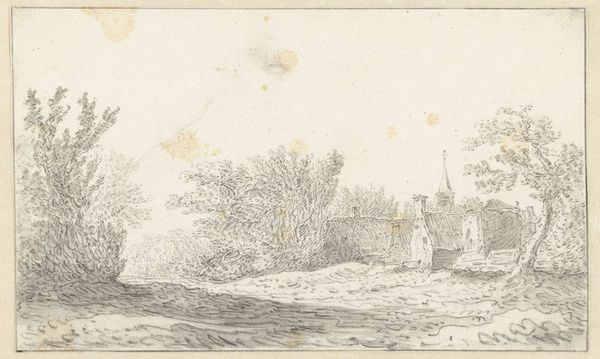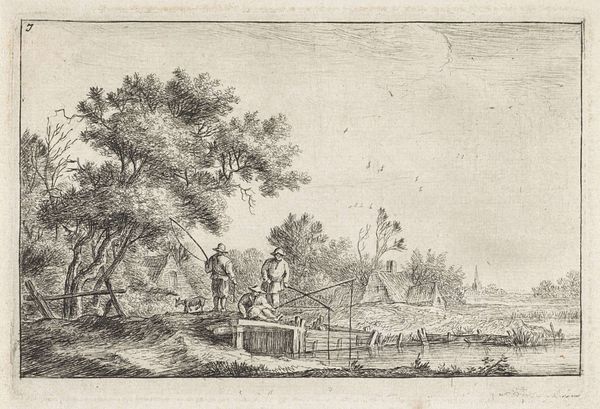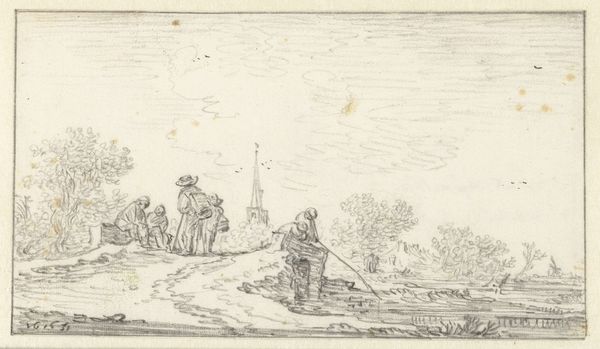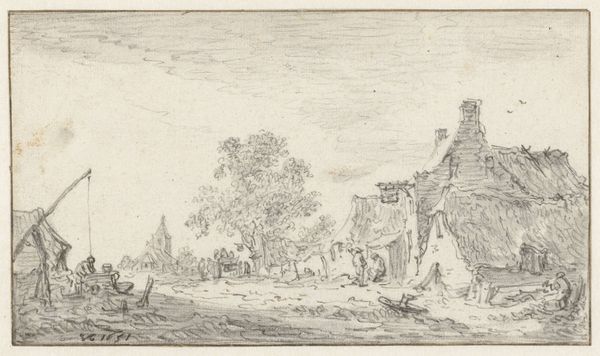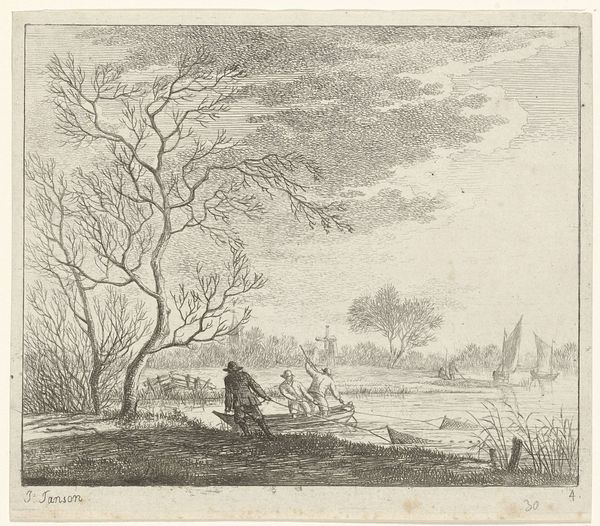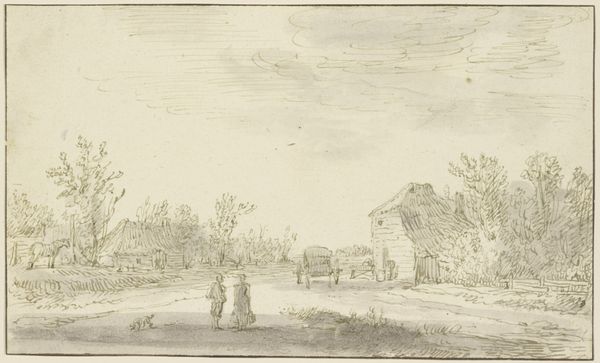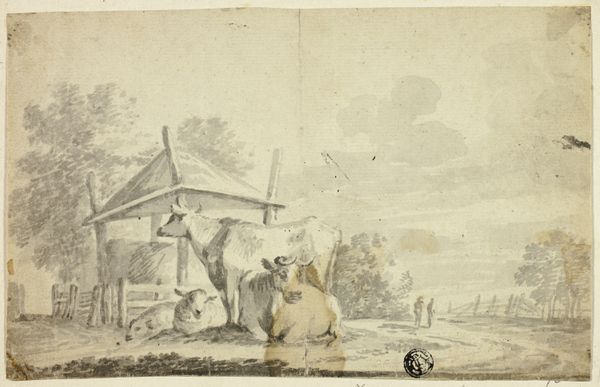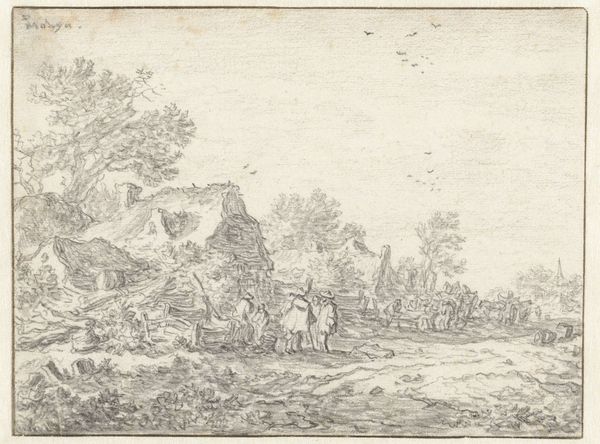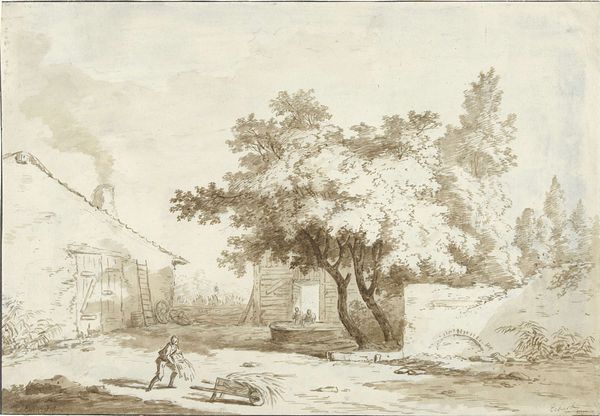
etching
#
dutch-golden-age
#
etching
#
pencil sketch
#
landscape
#
etching
#
figuration
#
line
#
genre-painting
#
realism
Dimensions: height 87 mm, width 147 mm
Copyright: Rijks Museum: Open Domain
Curator: This small etching, titled "Drie vissers op een brug", or "Three Fishermen on a Bridge," is attributed to an anonymous artist from the Dutch Golden Age, sometime between 1630 and 1713. It's currently held at the Rijksmuseum. What strikes you about it? Editor: It feels incredibly peaceful. The composition, while simple, creates a sense of depth. The foreground bridge, with the figures, leads your eye back to the distant village. I’m drawn to that church spire. It hints at something larger, more permanent than the daily activity of fishing. Curator: Yes, the composition guides us skillfully. Note the almost rhythmic quality of the lines, particularly in the rendering of the foliage and the water's surface. The artist’s strategic use of hatching and cross-hatching generates subtle gradations of light and shadow, a tonal arrangement that really articulates form, space, and depth within this limited scale. Editor: The figures themselves, the fishermen and their dogs, carry symbolic weight, I think. The fisherman archetype frequently stands in for patience, perseverance, and perhaps even a spiritual quest, a metaphor for drawing knowledge from the depths. The presence of their canine companions speaks of loyalty and companionship, crucial elements in their solitary pursuit. Curator: Indeed. Considering genre painting as it developed in Dutch Golden Age, it may depict not only realistic life, but it has underlying morals. Though the figures are tiny, they are rendered realistically, which could mean a promotion of that life. The structure creates that mood too, though; the stark contrast between light and shadow. And while serene, the texture—those rapid etching strokes—imparts a quiet energy, a vibrant surface tension. Editor: Precisely. The darks also represent things like hidden dangers and untapped potential, like the unconscious as a fisherman’s lake—an inexhaustible resource for metaphors about psychological states. Curator: That's a fascinating interpretation, certainly one the piece can accommodate. Editor: Overall, I find this etching invites us to consider both the transient nature of daily existence and the enduring human connection to the landscape and nature. The etching process allows the artist to use repeated, small movements to build to these complex interpretations, which is amazing. Curator: It's remarkable to see how an anonymous artist using such economical means achieved such depth and evocative expression.
Comments
No comments
Be the first to comment and join the conversation on the ultimate creative platform.

